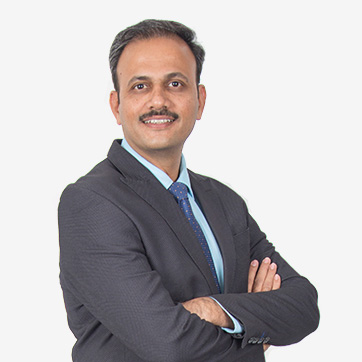
Cancer reconstruction is life-changing surgery. Not only can it help improve your appearance, but it can also help improve your quality of life. Dr. Nilesh Satbhai is an experienced plastic and reconstructive surgeon committed to delivering excellent care and results for all patients. Consult Today!
Cancer treatment causes damage to the body that affects how your body works or looks. To repair this damage, you might need a type of surgery that is called reconstructive surgery.
Reconstructive surgery is completely different from cosmetic surgery. You may opt for cosmetic surgery to look or feel better about your appearance, but it is rarely needed for medical reasons. Reconstructive surgery on the other hand is done for medical reasons.
At the consultation, Dr. Nilesh Satbhai will assess your medical history and current health to determine if you are a good candidate for cancer reconstruction surgery. Dr. Nilesh will also perform a physical examination and may order imaging tests such as X-rays or MRI scans. After having all of the necessary information, Dr. Nilesh will be able to discuss your treatment options with you and answer any questions you may have.
Dr. Nilesh will also explain the risks and potential complications of cancer reconstruction surgery. It is important that you understand all of the risks and benefits of the procedure before making a decision. Be sure to ask Dr. Nilesh any questions you have so that you can make an informed decision.
The goal of breast reconstruction is to restore one or both breasts to near normal shape, symmetry, appearance, and size following mastectomy, lumpectomy, cancer, or congenital deformities.
You may be a candidate for breast reconstruction surgery if you have undergone a mastectomy (breast removal surgery) or if you are scheduled to have a mastectomy. Breast reconstruction surgery can be performed at the same time as your mastectomy, or it can be done as a separate procedure. In addition, you should be in good overall health, not have any medical problems that may hinder your recovery, and have realistic expectations for the results of the surgery.
Request AppointmentIn flap reconstruction, Dr. Nilesh takes the tissue from your own body (i.e. autologous tissue) and uses them to form a breast. Usually, Dr. Nilesh takes the tissue from your lower abdomen (belly), but it can also come from your thigh, back or bottom.
Dr. Nilesh may remove skin, fat, blood vessels, and muscle from these parts of your body to form a new breast. This tissue is called a flap.
Sometimes, Dr. Nilesh moves a flap through your body (also called a pedicled flap). In this way, the flap retains its blood supply, or they might detach it from its blood supply (i.e., free flap) and attach it to blood vessels in your chest.
Types of Flaps
DIEP flap: In this type of flap, the surgeon takes skin, fat, and blood vessels from your lower belly. A DIEP flap does not remove the underneath abdominal or belly muscle.
TRAM flap: In this type, the surgeon removes the skin, fat, blood vessels, and muscle from the lower abdomen or belly.
Latissimus dorsi (LD) flap: The surgeon will remove tissue and muscle from your back and then transplant the LD flap (which is still connected to its blood supply) through your back to the breast area.
IGAP flap: For this procedure, the tissue comes from your butt. Muscle is not required in this procedure.
SGAP flap: In this technique, tissue (not muscle) is removed from your butt. SGAP flap uses a different group of blood vessels than the IGAP flap.
PAP flap: The surgeon removes tissue from your thigh (inner and back of the thigh) and uses it to form a breast.
TUG flap: It is similar to a PAP flap; this technique involves the tissue from your thigh. A TUG flap transplants both tissue as well as muscle.
SIEA flap (or SIEP flap): This procedure is like a DIEP flap, but it involves different blood vessels. Healthcare providers don’t use this technique as often.
In implant reconstruction, surgeons use silicone or saline implants to recreate breast tissue. At times, surgeons use a combination of implants and tissue from your body. Implant reconstruction can take place along with a mastectomy, or after mastectomy.
Types of Implant Reconstruction
If you get a breast reconstruction surgery done, you can avail the following benefits:
The musculoskeletal system contains bones and soft tissues, such as joints, ligaments, muscles, and tendons. All these provide support and stability to the body and allow it for movement.
Muscular skeletal reconstruction is a type of surgery that is used to correct birth defects, injuries, or diseases that have affected the muscles, tendons, or bones.
A person may require musculoskeletal surgery in the following conditions:
Trauma: Trauma from car accidents and sports-related injuries may cause fracture or dislocation that needs surgery.
Degenerative diseases: Such as osteoporosis, osteoarthritis, and spondylosis.
Bone cancer: Can develop in bone or soft tissue. Bone cancer is an unexpected type of cancer that begins when cells in the bone start to grow out of control. Bone contains 2 kinds of cells.
Osteoblasts: These are the cells that form a new bone.
Osteoclasts: These are cells that dissolve an old bone.
Primary bone cancer: Cancers that start within the bone are known as primary bone cancer. Primary bone cancers are also known as bone sarcomas. Some examples are:
The main aim of reconstruction surgery is to remove all of the cancer. Even if a small amount of cancer is left behind, it might grow and make a new tumor and may even spread to other parts of the body. The type of surgery depends mainly on the location and size of the tumor.
Surgery for bone tumors in arms or legs
Tumors in the arms or legs can be treated with either:
Limb-salvage or (limb-sparing) surgery: It involves the removal of the cancer and some surrounding normal tissue but leaving the limb basically intact.
Amputation: Amputation removes the cancer and all or part of an arm or leg.
Reconstructive surgery can help if you lose a limb and want to restore function as much as possible. For instance, if your leg needs to be amputated mid-thigh (including the knee joint), then the lower leg and foot can be rotated and attached to your thigh-bone, so that your ankle joint works as a new knee joint. This surgery is also known as rotationplasty.
If the bone tumor is in the upper arm or shoulder and amputation is needed, in some cases, the area with the tumor can be removed and the lower arm reattached so that you will have a functional, but much shorter, arm.
Oral reconstructive surgery is a surgery to rebuild the tissues of the mouth, face, and jaws. This includes the bone of the jaw, the skin of the face, the muscle of the tongue, the soft tissues in the cheeks, the palate, and the floor of the mouth. These are very complex structures and are extremely important for the normal function of speech, eating, swallowing, and also for having well-supported teeth.
There are many reasons why someone might seek out oral reconstructive surgery. Some people are born with congenital defects that affect the function or aesthetics of their mouth, while others might have sustained injuries or developed conditions that have left them in need of corrective surgery.
In general, anyone who is unhappy with the way their mouth functions should consult a doctor to see if oral reconstructive surgery is right for them.
Request AppointmentFollowing are various methods of oral reconstructive surgery:
Bone grafts: Bone grafting technique is used to rebuild part of the jaw for a dental implant. Your own bone may be used, or artificial bone or demineralized bone matrix are available.
Free flap surgery: In free flap surgery, tissue is transplanted from elsewhere in the body. This can be bone, muscle or skin, or a combination of all.
These are completely removed from one part of the body and reconnected using microsurgery to restore the blood supply to the tissues.
Implants such as cheek bones or jaw joints can be built by using the latest technological developments in scanning and computer design.
Once you have had your cancer removed by surgery, you will need to give yourself time to recover. Depending on the person, the recovery period varies. Most people take 4 to 6 weeks before they feel well enough to return to their normal routine. During this time, Dr. Nilesh Satbhai will likely give you specific instructions on how to care for yourself and your incisions.
The cost of cancer reconstruction in Mumbai will depend on the type of procedure you need, the location of the surgery, and whether or not you have insurance. During the consultation, Dr. Nilesh Satbhai will go over the expected costs with you.
Request AppointmentThere are always risks associated with any type of surgery, but the risks of cancer reconstruction are usually minimal. The most common complications include infection, swelling, mild bleeding, bruising, and mild to moderate pain. If any of these problems arise, Dr. Nilesh is well-versed in reconstructive procedures and will handle them promptly and effectively.

MBBS, MS, MCh
